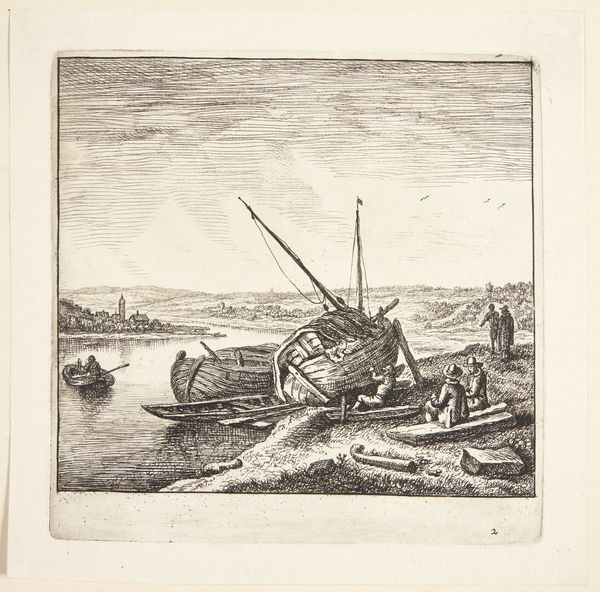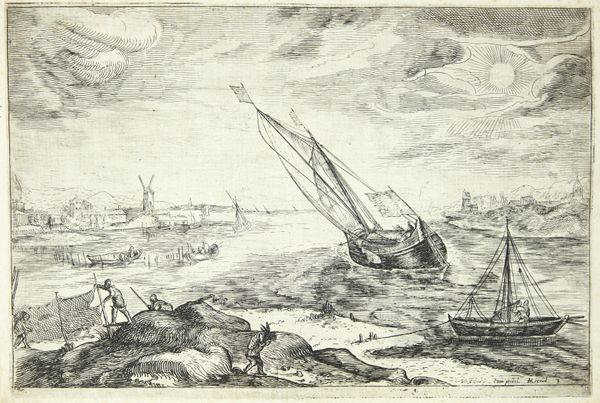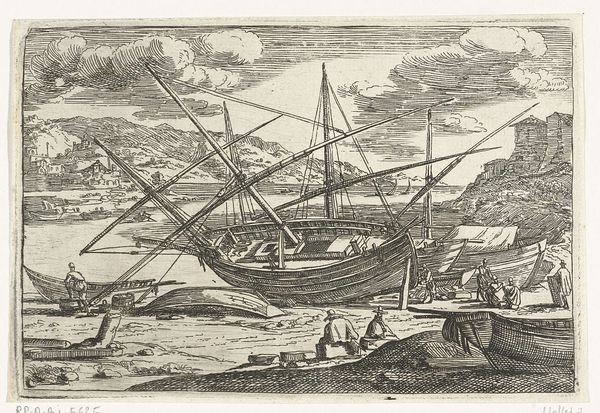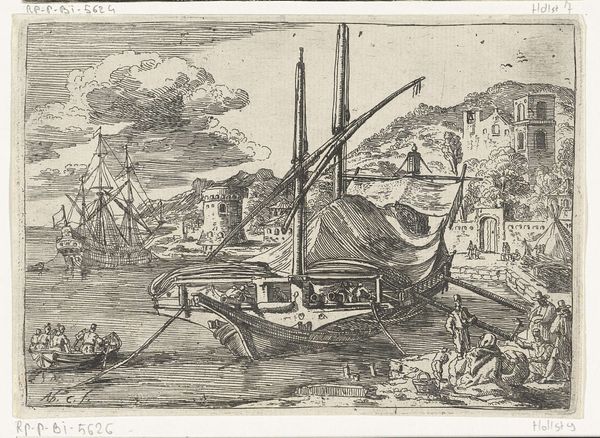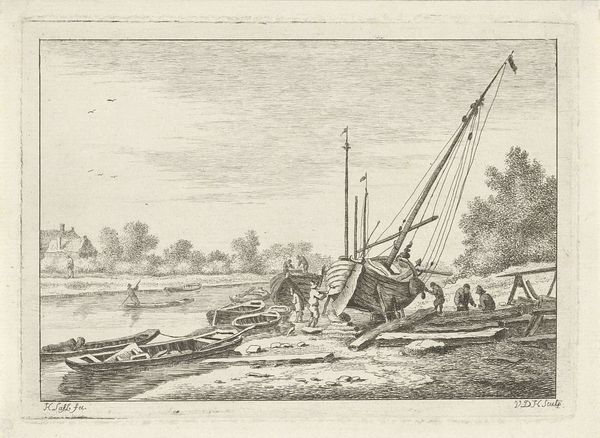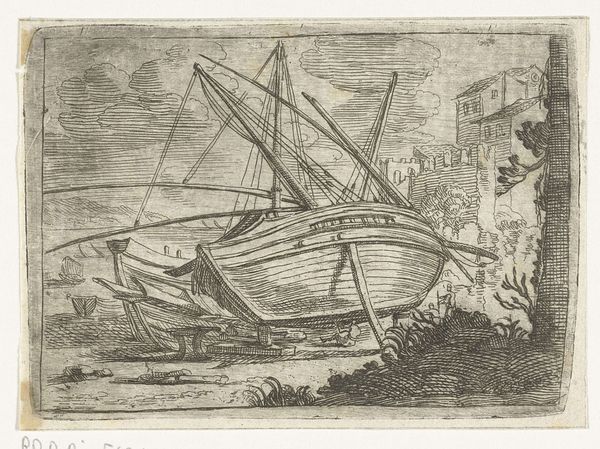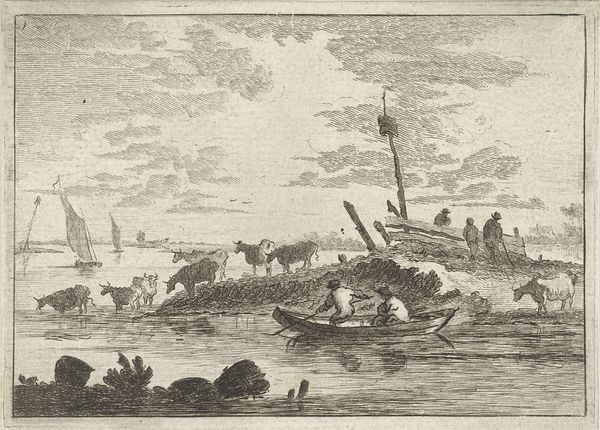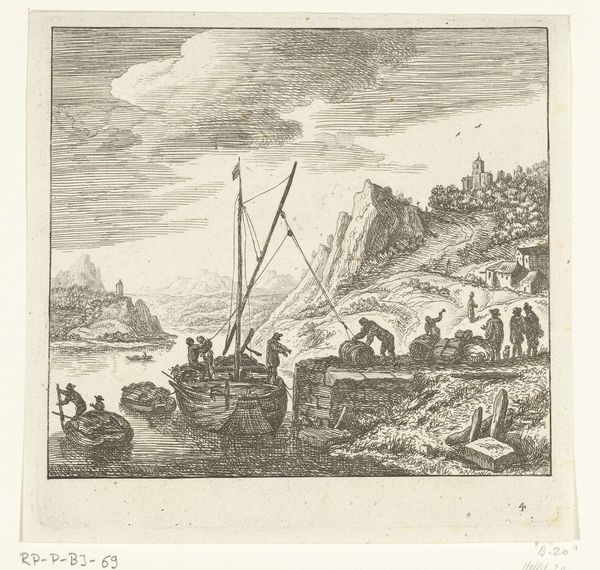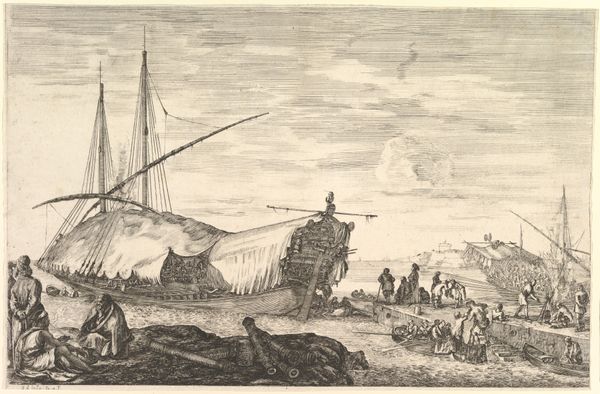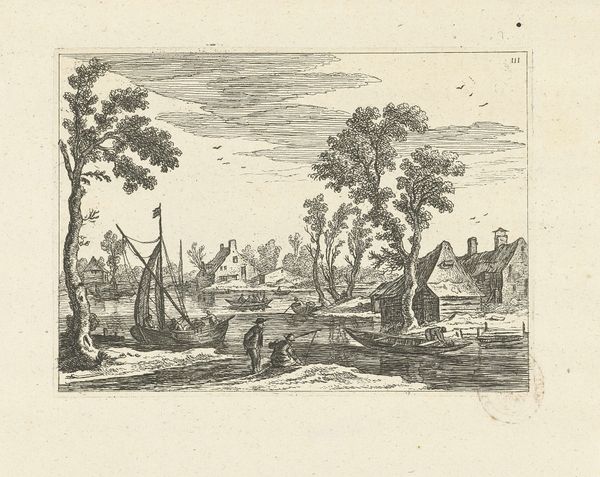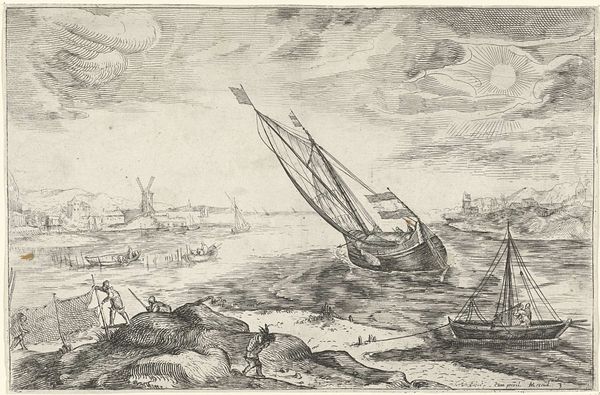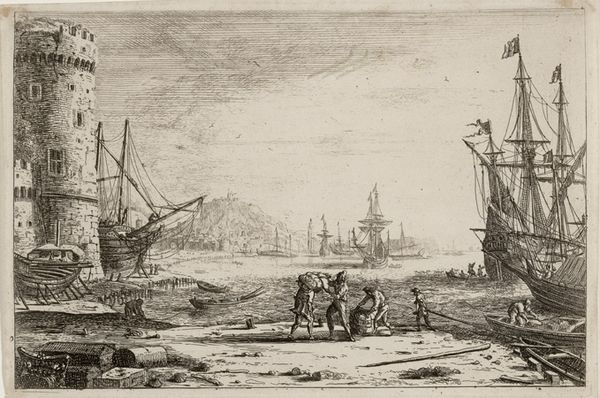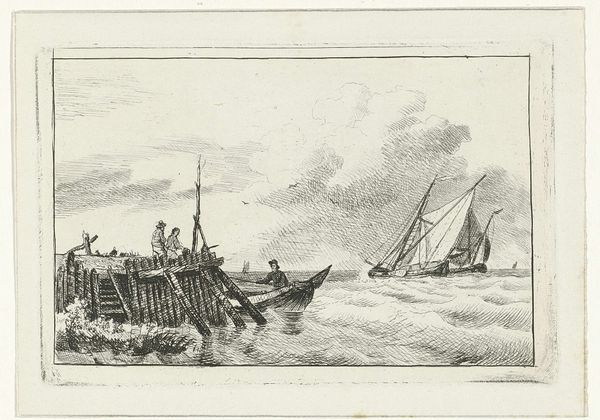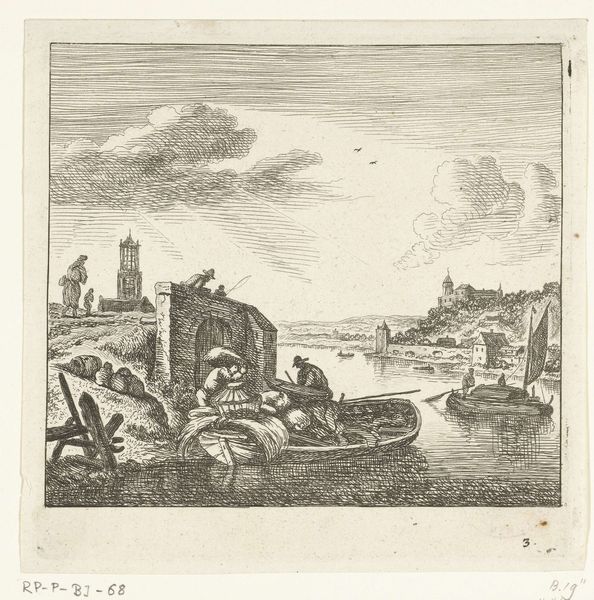
print, engraving
# print
#
landscape
#
river
#
cityscape
#
genre-painting
#
engraving
#
realism
Dimensions: height 148 mm, width 160 mm
Copyright: Rijks Museum: Open Domain
Curator: Here we have William Young Ottley’s "River View with a Man Caulking a Boat," dating to 1828. It's an engraving, part of a broader interest in genre painting. Editor: It’s quiet, almost dreamlike. The neutral tones give a sense of suspended time, yet there is also so much detailed activity with these tiny human figures against the river. Curator: The act of caulking the boat itself, an act of repair and maintenance, speaks to a constant negotiation with the precarity of life for the working class during the early 19th century. Who held the resources, and what kind of labor could afford independence? What can we decode from their dress or demeanor? Editor: Absolutely, but also consider the universal symbolism. Water is life, transition, the subconscious. The boat, then, represents not only livelihood, but the journey of life itself. The image presents a cluster of very old and primordial archetypes. Even their hats point to something beyond class– they’re like emblems. Curator: Interesting how you zero in on symbolic imagery there. We have to also look at it through the social context, specifically how representations of labor often ignored the voices and experiences of those depicted. There is that city in the far distance and an idle well-dressed pair off to the side: this distance evokes hierarchies in this period. Editor: But isn't there something timeless about these forms and figures? That humble village, the becalmed vessels and sturdy tradesmen… It’s more than just an illustration of class differences. It’s a visual echo of resilience and community. Curator: I concede your point on resilience, for sure. To look at the boat's maintenance and their clothes provides a way of thinking through questions of the artist’s class, race, or gender and broader networks of patronage and power during that time period. I also think, with your ideas of these timeless themes, there's something in it. Editor: Ultimately, it’s a simple yet potent scene, reminding us of the human relationship with water and our ongoing need for shelter and provision.
Comments
No comments
Be the first to comment and join the conversation on the ultimate creative platform.
